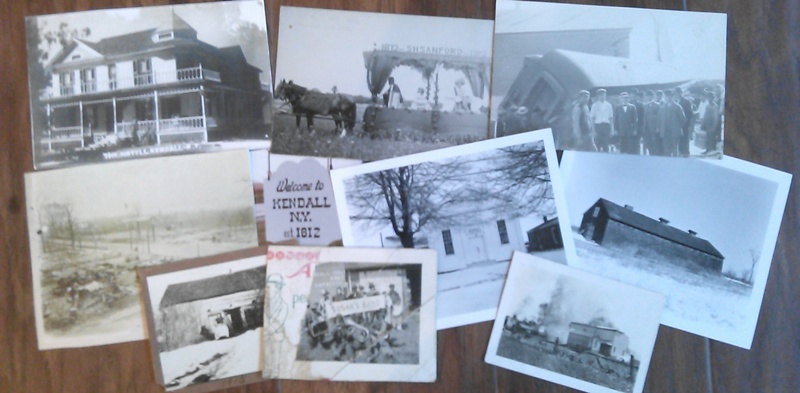How
did Kendall get its name?? Have you ever
wondered?? We have heard that the town was named after Amos Kendall. Why?
First, let’s get to know the many faces of Amos Kendall. He was born in 1789 in Dunstable, Massachusetts. He graduated at the head of his class from Dartmouth College in 1811.
According to Wikipedia, Amos Kendall
"was an American lawyer, a journalist and a politician. He rose to
prominence as editor-in-chief of the 'Argus of Western America', an influential
newspaper in Frankfort, Kentucky. He used his newspaper, his writing
skills, and extensive political contacts to build the Democratic Party into a
national political power".
Following Democrat
Andrew Jackson's election in 1829, he went to Washington, D.C.
He became fourth Auditor of the Treasury and was the President's intimate
adviser. He proved an able administrator and became the United States
8th Postmaster General in 1835 holding office until 1840. Being that he
was such a supporter and friend of President Jackson, Amos wrote most of the
President's annual addresses and produced newspaper material that appeared
throughout the country to build support for Jackson's programs.
Amos Kendall
invested heavily in Samuel Morse's new invention, the telegraph. In March
1845, Samuel Morse and Alfred Vail hired Amos Kendall
to be their business manager. Amos Kendall agreed, and received a 10 percent commission on
all patent licenses he was able to obtain. Two months later, Amos Kendall
incorporated the Magnetic Telegraph Company to own and operate a telegraph line
between Washington, D.C.,
and New York City.
It was the first privately owned telegraph line in the nation's history.
Amos Kendall went on
to co-found the Gallaudet University in 1857, which is the first higher
education institution for students who were deaf. He donated his home
and 2 acres of land at Kendall Green for the school's use. On February 16, 1857,
Congress passed legislation giving the Kendall
School a charter as the Columbia Institution for
the Education of the Deaf and Dumb and the Blind. Three months later, Amos Kendall
hired Edward Miner Gallaudet as the school's first superintendent, while Amos Kendall assumed the presidency of the institution's board
of directors.
Amos devoted himself to religious study. Calvary Baptist Church
was founded in 1862. Although Amos Kendall was
not a member of the church, he had a high regard for its pastor and donated
$90,000 toward construction of the church. The congregation built a luxurious
$115,000 house of worship. Amos Kendall was welcomed as a member of Calvary Baptist Church
in 1865. The church opened its doors in
1866. It’s about the same time that Amos
Kendall was made a senior deacon in the church. But within 18 months the building was
consumed by fire. It was insured for just $50,000. Amos Kendall
donated another $15,000 to rebuild the edifice.
Amos Kendall died at dawn at his
home in the Stickney Mansion on Friday, November 12, 1869, and was
interred in Glenwood Cemetery in Washington,
D.C. It was more than
likely liver or stomach cancer that ended his life. He was 80 years old.
Now you know who Amos Kendall was. Why is Kendall
named after him? Two men by the names of Webster and Peasley,
who were area merchants at the time, suggested the name. They were active Democratic
politicians, and largely instrumental in securing the passage of an act in the
State Legislation for the formation of the town of Kendall.
(keep in mind prior to 1837 we were known as North
Murray). In April 1837, Kendall became established from the northern portion of the
town of Murray.
This act gave Kendall an area of
19,994 acres of land. In the same year, a town meeting was held in a
local tavern and the town officers were elected. Alanson Whitney became supervisor and
Theron Soule was elected town clerk. Kendall was established in 1837. (a side note: the signs that say Kendall was established in 1812, in actuality is when the first pioneer became "established")






















